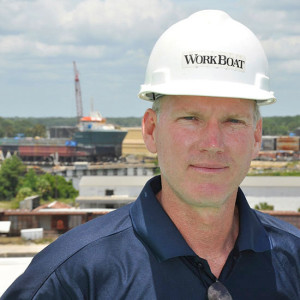It’s been three years since we first issued a warning concerning the U.S. Gulf. Back then, several majors announced that they would reduce capital expenditures. Most, however, thought that it was just a bump in the road, a “short-term softness” instead of a major slowdown.
Well, we can safely say that it was the latter and more — a major depression in the offshore energy market.
Bill Pike’s annual report due out in the May issue on the offshore industry again contains no shortage of bad news. However, at least some operators are now offering a glimpse of hope, albeit a faint one.
Stacey Stanley, president and CEO of crewboat operator Muchowich Offshore Oil Services in Clute, Texas, said she can see a light at the end of tunnel, “but it is just a flicker.” But Stanley and other crewboat operators have seen their fleets reduced in size. Offshore Oil Services had eight crewboats in its fleet, but the company sold two to boost cash reserves to weather the rough market.
Nearly half of SeaTran Marine’s 19 crewboats are stacked, and another crewboat operator’s entire fleet of eight vessels is stacked. But Charlie Tizzard, SeaTran’s executive vice president and chief financial officer, is more optimistic than most. He believes that the market could begin to improve as early as next year due to the new administration’s commitment to the energy industry.
Wes Bordelon of Bordelon Marine is somewhat positive about a recovery but it is still a long ways off. He said the key to staying healthy in this depressed market is a reliable, sustainable budget for 2018, and a realigned industry rebuilt through mergers and consolidation.
But others aren’t as bullish. Matthew Rigdon of PSV operator Jackson Offshore Operators said an increase in global oil demand is needed to stimulate the market. Without this, he doesn’t envision any boost in drilling in the Gulf.
The bottom line is that there is still too many boats in the market. As Bordelon conceded, “There is just too much steel out there for the level of activity.”





